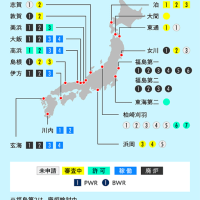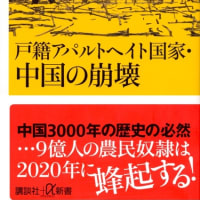2017-10-14 05:07:20 GlobalNews
○Clothing industry gets Largest Environ Polluters/衣料品業界は、世界最大の環境汚染の一つ.
- 16/10/05 04:42
- ♪PFK ASAP NEWS
2016-10-05 04:42:14
GlobalNews
Clothing industry remains one of the largest environmental polluters in the world,
Clothing industry remains one of the largest environmental polluters in the world:
The clothing industry is one of the biggest polluters in the world, next only to Big Oil. Fashions change with the seasons, and often the in-vogue pieces of the moment last only that long—a moment. What this leads to is a revolving door of fabrics, dyes, textures, patterns and materials. Not only is the environment polluted, but also many foods grown in these environments . When you read the label of your shirt or dress, what does it read? Made in Bangladesh? Made in Thailand?
In 2013, the Rana Plaza in Bangladesh, a factory that produced cheap clothing for the West, collapsed and killed over 1,100 Bangladeshi workers, while injuring thousands others. Brands that ran factories within the Rana Plaza included the Gap, J.C. Penney, Walmart and The Children’s Place. Of course, we all need clothes. There’s no getting around that. Yet, the desire to have clothes simply to prove that one is trendy or in-the-know about current styles leads to a type of consumerism that can often be traced back to pitiful working conditions like those suffered by underpaid and abused workers of the Dante-esque scenarios in the Rana Plaza.
And now there is more evidence to show that fashion is not only killing and abusing the most vulnerable people on the planet but is also poisoning and polluting our world, as well. Here are just a few shocking statistics that demonstrate how much of an impact producing clothing can have:
In 2010, China’s textile industry processed 41.3 million tons of fiber and accounted for 52-54 percent of the world’s total production.
Millions of tons of unused fabric at Chinese mills go to waste each year when dyed the wrong color.
The Chinese textile industry, which produces about half the clothing Americans buy, creates about 3 billion tons of soot each year.
Small and mid-size Chinese dye houses dump billions of gallons of toxic discharge into China’s waterways each year.
In 2008, there were 302 wastewater pollution violations in China. In 2013, there were 1,497 .
It takes 15 to 17 gallons of water to dye each individual clothing product.
Textile dyeing is the No. 2 polluter of clean water on earth, following agriculture.
To see the real impact of the pollution created by the demands of the clothing industry just do a search on the internet for the Citarum River in Indonesia. The Telegraph discussed the impact of the textile dyeing industries on Java’s Citarum River in 2014, “Over 200 textile factories line the river banks. The dyes and chemicals used in the industrial process — lead, arsenic and mercury amongst them — are churned into the water, changing its color and lending the area an acrid odor.”
Perhaps it is time for consumers to make the switch to eco-friendly brands, or, better yet, would it be so unreasonable for people to consider the idea of “slow fashion”? As Hazel Clark, research chair of fashion at Parsons noted, slow fashion focuses aggressively on the problem of consumerism, in addition to the issue of environmentally friendly production processes: The problem with something like green fashion [or other movements] is that it’s still very much focused on the item’s consumption, whereas slow fashion addresses the whole cycle.
Throw-away or disposable fashion, as it is often called, cannot continue forever because—quite simply—water is being wasted on frivolous objects and it is damaging precious resources. As Jacqueline Jackson points out in Assessing the Environmental Impact of the Fashion World : “The world’s resources cannot keep up with our increasing demand for throw-away fashion. Cotton, for example, a key input to the apparel industry, is responsible for 2.6 per cent of the global water use. However, a gap already exists between water supply and demand. If we do nothing to correct this imbalance, by 2030 demand for water will exceed supply by 40%.
Continuing down this path may eventually lead us to the dilemma of the Ancient Mariner, with water, water, every where, nor any drop to drink.
Sources:
H/t reader kevin a.
* * *
PayPal: Donate in USD
PayPal: Donate in EUR
PayPal: Donate in GBP
Tags: Clothing industry, Environment, Global News
2017-10-14 05:07:20 GlobalNews
2016-10-05 04:42:14 GlobalNews
- ファッション業界は、世界最大の環境汚染の一つであります:
衣料品業界は最大の一つである汚染次の唯一の大手石油会社に、世界インチ ファッションは、多くの場合、瞬間最後だけが長期瞬間の中で、流行の作品を季節ごとに変化する、と。これはにつながることは生地、染料、テクスチャ、パターン、材料の回転ドアです。だけでなく、汚染環境ですが、また、多くの食品これらの環境で成長しました。あなたがあなたのシャツやドレスのラベルを読んだとき、それは何を読んでいますか?バングラデシュ製?タイ製?
2013年、バングラデシュのラナ・プラザ、工場数千人を負傷しながら西安価な衣料品を生産し、1100を超えるバングラデシュの労働者を崩壊し、死亡した。ブランドラナ・プラザ内に工場を実行したギャップ、JCペニー、ウォルマートと含まチルドレンズプレイス。もちろん、我々はすべての服を必要とします。何のことを歩き回るはありません。しかし、単にその1を証明するために服を持っていたいという願望は、トレンディまたはイン・ノウハウ現在のスタイルについては、多くの場合、バックダンテの低賃金や虐待を受けた労働者が被ったような哀れな労働条件にさかのぼることができる消費者のタイプにつながるですラナ・プラザで〜的なシナリオ。
そして今、そのファッションはのみだけでなく、殺害し、地球上で最も脆弱な人々を乱用も毒殺され、私たちの世界を汚染されていない表示するより多くの証拠があります。ここではごく一部である衝撃的な統計インパクト産衣類のどのくらいを発揮持つことができます。
2010年には、中国の繊維産業は、繊維の4130万トンを処理し、世界の総生産量の52から54までパーセントを占めました。
数百万トン の中国工場での未使用の生地のは間違った色を染めたときに毎年無駄になります。
約半分の衣類生産する中国の繊維産業、 アメリカ人が 買うには、すすの約30億トンを毎年作成します。
中小規模の中国の色素家はのガロン数十億ダンプ 有毒な放電を 毎年中国の水路に。
2008年には、中国の302廃水汚染の違反がありました。2013年にあった、1497を。
これは、15〜17ガロンかかる 水を各個々の衣類製品を染色します。
繊維の染色は、第2の 汚染 のきれいな水、農業以下、地球上で。
衣料品業界の要求によって作成された汚染の本当の影響を確認するにはちょうどインドネシアのCitarum川のためのインターネット上で検索を行う。電報は 200以上」、2014年にJavaのCitarum川の織物染色産業の影響を議論しました繊維工場は、川岸に並びます。工業プロセスにおいて使用される染料や薬品-それらの中で、鉛、ヒ素、水銀は-その色を変更し、エリアに不快臭を貸し、水の中に解約されています」。
おそらくそれは時間が消費者が環境に優しいブランドにスイッチを作るために、または、より良いまだ、人々は「スローファッション」のアイデアを検討することはとても無理だろうのためにあるのですか?ヘーゼルクラーク、パーソンズでファッションの研究の椅子が指摘したように、ゆっくりとファッションは環境に優しい生産プロセスの問題に加えて、消費者の問題に積極的に焦点を当てて:緑のファッション[または他の動き]のようなものの問題は、それはまだ非常にあるということですスローファッションサイクル全体に対処するのに対し、はるかに、アイテムの消費に焦点を当てました。
スローアウェイまたは使い捨てのファッションを、それはしばしば呼ばれるように、かなりので、単に水が軽薄なオブジェクトに浪費されていて、それは貴重な資源を損傷されている永遠に続けることができません。ジャクリーン・ジャクソンがで指摘するようにファッションの世界の環境影響を評価する:「世界の資源は、スローアウェイファッションのための私たちの増大する需要に追いつくことができません。コットンは、例えば、アパレル業界へのキー入力は、世界の水使用の2.6パーセントに責任があります。しかし、ギャップはすでに水の供給と需要の間に存在します。私たちはこの不均衡を是正するために何もしない場合、 2030年までに水の需要は40%供給を超えてしまいます。
この道を続けると最終的には水、水、あらゆる場所、また飲むために任意のドロップで、古代マリナーのジレンマに私たちを導くことができます。
ソース:
H /トンリーダーケビン。
* * *




















※コメント投稿者のブログIDはブログ作成者のみに通知されます